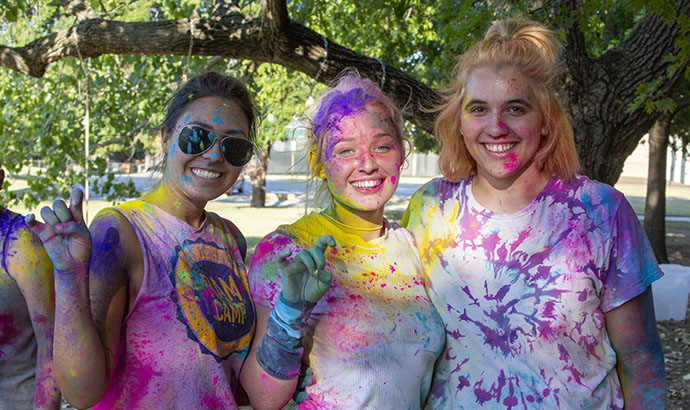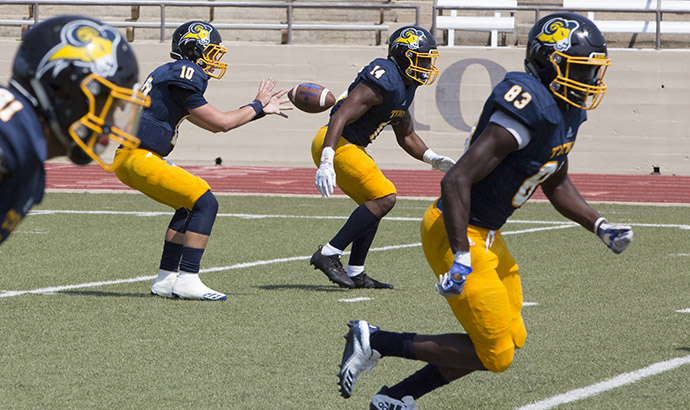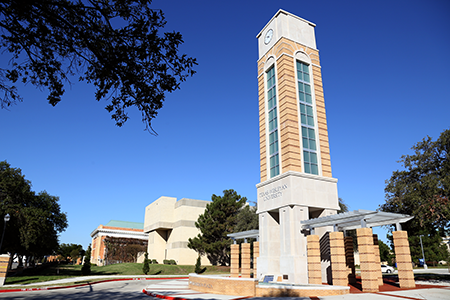10 fun things to know about the Lunar New Year
The Lunar New Year has a rich history that is deeply rooted in ancient Chinese legends but is celebrated in many Asian cultures, each with their own unique traditions. Here are a few cool things you should know about the holiday.
1. It’s the biggest holiday in Asian culture
The Lunar New Year is the oldest and most important holiday in China — and it’s also celebrated in countries like Indonesia, Japan, Malaysia, South Korea, Singapore, Thailand, the Philippines and Vietnam. Over 2 billion people celebrate the holiday around the world, including places like New York, London and even here in Dallas-Fort Worth.
2. It’s also called the Spring Festival
Even though winter weather is still around, the Lunar New Year is also called the Spring Festival. The holiday welcomes the beginning of spring. The traditional Chinese Lunar Calendar originated about 4,000 years ago and was created to divide the year into seasons for agriculture. Because the new year falls around the time the sun is entering a position to start a gradual warming, many farmers will start planting crops – signifying the beginning of spring, which is one of the ways the holiday was also dubbed the Spring Festival.
3. Many traditions – like wearing the color red – started from an ancient legend about a monster
According to Chinese legends, a beast named Nian would devour villagers on New Year’s Eve. Many traditions are linked to the “Guo Nian,” which means surviving Nian’s attack. For example, legend has it that many people tried to ward off Nian with food, but wearing red is what ultimately drove the monster away. It’s also why fireworks are a big part of traditions – the sound is said to scare off evil spirits.
4. Various Asian cultures have different zodiacs and traditions
2023 is the year of the rabbit in many Asian countries, but some have different zodiac signs they follow. In the Vietnam and Gurung (Central Nepal) zodiac, the rabbit is replaced with a cat, while the Malay zodiac it’s a mousedeer.
Many cultures will also have their own traditional costumes, foods and events. In the Philippines, people will jump for joy at midnight, as tradition says it will make them grow taller. People in Singapore will eat yusheng, a traditional raw fish salad that’s only had during the holiday, while others will have Nian Gao (dumplings).
5. The dates change every year
Many Chinese rulers debated the start of the festival, and for years, the dates went back and forth. It finally was decided that it should follow the traditional Chinese lunar calendar. This marked the beginning of the festival as the first new moon of the year and ends will the full moon, which is 15 days (about 2 weeks). This means it can fall anywhere between Jan. 21 and Feb. 21.
6. There are different taboos associated with the holiday – like when to clean your house
Most “spring cleaning” will happen before the Lunar New Year — that’s because during the holiday, it’s believed that sweeping and removing trash symbolizes misfortune and bad luck, especially during the first three days. Cleaning before the new year will help get rid of the bad luck, but during the holiday, you don’t want to sweep or wash away any good luck that comes.
Many people also will not wash or cut their hair, as the Chinese character for “hair” is the same first character for “prosper.” Washing or cutting your hair is seen as a way to wash your prosperity away.
7. Red envelopes are given out
It’s a tradition to give your friends and family bright red envelopes filled with money. But it’s not about the money — it’s all about the envelopes. They symbolize good wishes and luck for the year ahead. With today’s technology, many people have exchanged digital red envelopes instead of the traditional paper ones.
The tradition comes from an old story about a demon, Sui, who would terrorize children on New Year’s Eve. Parents would try to keep their children awake by giving them eight coins to play with. Inevitably, many of the children would fall asleep, and the coins (eight immortals in disguise) would light up and drive the demon away. The envelope is now symbolic of the coins.
The amount of money never includes the number 4 because the Chinese pronunciation of “four” sounds like the word for death.
8. It’s also a time to gather with family and honor ancestors
Family is an important part of the Asian culture and holidays like the Lunar New Year mark a special time to gather with loved ones. Part of the Lunar New Year is the reunion dinner, known as Tuan Nian or Wei Lu, where families gather on New Year’s Eve. It’s considered one of the most important parts of the celebration.
Many will also take part in ancestor worship, which is based on the belief that deceased family members are continuing to live in the spiritual world. By paying their respects to their ancestors, they believe that the departed will bless the family. Ancestors are usually invited to join the reunion dinner and will be served their favorite dishes.
9. Greetings go beyond “Happy New Year”
In western culture, we say “Happy New Year” and make resolutions. But in eastern cultures, the new year is welcomed with wishes of luck, health and good fortune. In Mandarin, typically you would say “Gong Xi Fa Chai,” which means “Wishing you prosperity and wealth.”
Other greetings include sayings like:
- May wealth come pouring in
- May you have abundance every year
- Good luck and fortune
- May everything go as you wish
10. The fireworks aren’t just to make the sky sparkly
The story of Nian isn’t just about wearing red to scare the monster away. Traditional Chinese culture also used fireworks to frighten the evil spirits. In China, fireworks will go off at different times depending on the region, but the most common times include when the reunion dinner is ready, at the stroke of midnight on New Year’s Day, again in the morning of the new year and the last day of celebration.
Now that you know more about the holiday, come celebrate it with us! The Diversity and Inclusion Council is hosting a Lunar New Year Celebration on campus at noon on Tuesday, Jan. 24 in the Martin Center Ballrooms.








